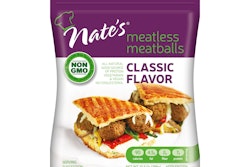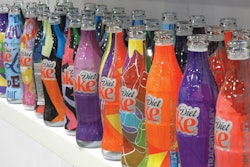
Yes, I know how that sounds. But the regulations are crucially important to food companies, so it’s useful to watch them develop and perhaps even get involved.
The typical sequence for agencies making regulations (OK to call them “rules”) is, first, they issue a proposed regulation, inviting the public to comment on it. Second, they mull over all the comments, make changes to the proposal as they see fit, and third, issue the final regulation, revised perhaps in light of the comments, together with detailed explanations of why they did what they did. Fourth, the final regulation becomes effective at some date after its publication.
Watchers of the FDA’s seven separate proposed regulations growing out of the Food Safety Modernization Act were surprised in September, because FDA didn’t follow the typical sequence. They had been proposed, and had been commented upon by the public. But instead of issuing final versions of the regulations, which was the expected next step, FDA issued slightly revised proposed versions of four of them.
Comments on the revised proposals are due by December 15. Final versions of the regulations are expected in 2015.
The new proposals on preventive controls for human food, foreign supplier verification, preventive controls for animal food, and produce safety, are not complete do-overs. Instead, they contain “changes to key provisions of the four proposed rules based on feedback received from the public during meetings and thousands of comments submitted to the agency on the proposed rules,” says FDA. Food industry members, farmers, academics and consumers had provided input.
The regulations are called for by 2011’s Food Safety Modernization Act. Key among that law’s goals was a shift in focus “to preventing food safety problems rather than responding to problems after the fact,” says FDA. The law did this, most notably, through the preventive controls programs that virtually all food companies are now required to put in place.
Given the importance of these goals and the fact that the rules will eventually affect most food companies, and given that the public comments on the proposals sent FDA the message that they had missed the mark in some respects, FDA is to be commended for proposing the changes and taking the unusual step of seeking another round of public input on the revisions.
For details of the new proposals, you should look at the Federal Register of September 29, 2014. Here are some key portions for a packager:
The Foreign Supplier Verification Program was of greatest interest to makers of packaging simply due to the fact that it was unclear whether makers of packaging were among the suppliers whose compliance the food company would have to verify. The new proposal doesn’t address that, and there is no reason to expect FDA won’t accept the quite reasonable argument that food contact materials like packaging should be excluded from the scope of this rule.
FDA has proposed to combine the two alternative approaches to foreign supplier verification that it previously proposed. Option 1 had called for mandatory initial on-site auditing and at least annual on-site auditing of suppliers in cases where there were serious potential hazards that the supplier was controlling, but it wouldn’t have been required under Option 2, instead allowing importers a choice of verification activities based on various factors.
Instead, now FDA has proposed a single option, giving importers more flexibility to choose verification measures, taking into account the risks. When there is a risk of serious injury or death, initial on-site auditing and annual on-site auditing of the supplier is required unless the importer documents that less frequent on-site auditing is appropriate. For lesser risks, importers would have a choice of verification activities.
FDA is also now proposing a broadened approach to hazard analysis relating to foreign suppliers, taking into account its regulatory record but also other factors such as the nature of the hazards presented and who’s controlling them. Verification of the suppliers’ compliance is then one part of the program put in place after performing the analysis.
As for the proposed regulation about “preventive controls,” highlights are that FDA clarified that the rule won’t apply to some farms and small businesses, and proposed a collection of steps for food companies to verify the compliance of their suppliers—not just foreign suppliers. These had not been part of the original proposal. Audits, sampling and testing, review of records, or other steps are proposed to be required of food facilities. (Many food companies already do these things, especially the sampling and testing.) As with the foreign supplier verification rule, it will be important for packagers that FDA clarify that this rule does not apply to food contact materials.
The proposed changes to the produce safety proposal and the preventive controls for animal food rule are aimed at clarifying several aspects and making others more flexible.
If you think any of these regulations might affect your business, you are well advised to let FDA hear from you before December 15. To do that, you need first to see the September 29 Federal Register and read the new proposals, as the details are in those devils.
Eric Greenberg can be reached at [email protected], or visit his firm's website at www.ericfgreenbergpc.com.

























